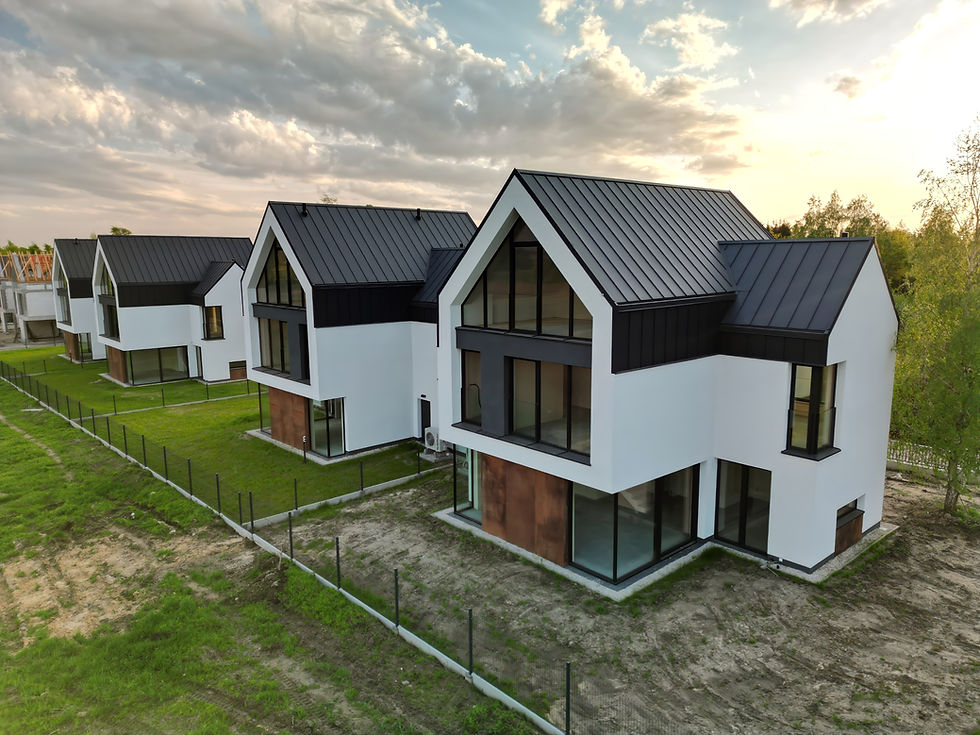Low-carbon housing scheme designed for whole-life performance
Residential developments supported by REFEA to minimise embodied and operational carbon through thoughtful structural and civil design from day one.

%20Strategy%20(7)_edited.png)
Whole-life carbon strategy
%20Strategy%20(7)_edited.png)
Reuse of existing structure
%20Strategy%20(7)_edited.png)
Integrated passive design
These are the kinds of projects we want to be involved in — where sustainability isn’t a bolt-on, but the starting point. When we’re part of the team early, we can help shape the structure and infrastructure in a way that genuinely reduces carbon, adds value, and creates homes that are built to last.
Holly Peirson
Structural Engineer
REFEA provides practical design guidance for low-carbon housing schemes that aim to meet or exceed future energy and sustainability standards. We can support residential developments with a focus on whole-life carbon performance - delivering structural and civil engineering solutions that prioritised long-term efficiency and low environmental impact.
Working closely with architects and developers at concept stage, our engineers advise on material choices, structural optimisation, and reuse potential for existing substructure elements. We help shape a frame strategy that reduces material use and embodied carbon, while coordinating with fabric-first thermal targets and passive design principles.
On the civil side, drainage strategy can be integrated, including rainwater harvesting and permeable paving, while external levels are designed to work with the natural landscape and reduce site intervention. Our early involvement ensures sustainability is embedded in the design process, not added at the end.

Focus Areas
REFEA’s work is guided by six core principles that drive sustainable structural and civil engineering - turning practical design decisions into low-carbon outcomes across East Anglia.
Reuse First
Prioritising existing structures and materials to reduce waste and embodied carbon.

Early Design Collaboration
Involving engineers early to embed sustainability from concept to construction.

Low-Carbon Materials
Specifying materials with lower embodied carbon and designing for material efficiency.

Circular Design Thinking
Designing for adaptability, longevity, and future reuse from the outset.
%20Strategy%20(3)-min.png)
Integrated Drainage Solutions
Embedding SuDS into civil engineering for sustainable, climate-resilient developments.

Practical Sustainability
Delivering buildable, cost-conscious solutions that meet real environmental targets.

Sustainable
structures

east anglia
As structural engineers, we have a unique opportunity to influence how the built environment responds to the climate crisis. Reuse isn't just about saving materials - it's about rethinking value, preserving what works, and designing with long-term resilience in mind. Through REFEA, we hope to make reuse a more practical and achievable option on projects across East Anglia by sharing knowledge, highlighting viable approaches, and supporting early-stage design decisions.
Mark Weston
Structural Engineer, JMS Engineers
Knowledge is key to sustainable change. Explore our latest insights and technical resources:

Path to a Low-Carbon Built Environment
The built environment contributes nearly 40% of global carbon emissions, much of it through construction and materials. In East Anglia, reducing embodied carbon is critical to meeting sustainability goals. By reusing structures, designing efficiently, and integrating low-impact civil solutions, we can reshape how the region builds - and lead the way towards a net zero future.


%20Strategy%20(1)_edited.png)









